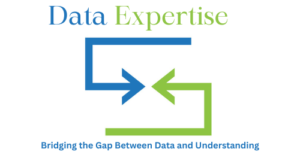Introduction
In today’s data-driven world, businesses rely on vast amounts of data for decision-making, financial reporting, and operational efficiency. However, inconsistencies, errors, and discrepancies in data often pose challenges, leading to incorrect insights and poor business decisions. Data reconciliation is the process of ensuring data accuracy and consistency across different systems, sources, and databases. It plays a critical role in finance, accounting, supply chain management, and various other industries where data integrity is paramount. This article explores the best techniques for data reconciliation and how organizations can implement them efficiently.
Understanding Data Reconciliation
Data reconciliation refers to the process of comparing and validating data from different sources to ensure accuracy, consistency, and completeness. It is commonly used in financial transactions, inventory management, and database synchronization. Organizations use reconciliation methods to identify and rectify data discrepancies, preventing costly errors and compliance issues.
Data reconciliation involves multiple steps, including data extraction, data transformation, validation, matching, and reporting. The goal is to ensure that data across various systems aligns correctly and meets predefined quality standards.
Importance of Data Reconciliation
- Accuracy and Integrity – Ensures that data across different systems is accurate, reducing the risk of financial and operational errors.
- Compliance and Regulatory Requirements – Organizations in industries like finance and healthcare must comply with strict data integrity regulations.
- Improved Decision-Making – Reliable and reconciled data helps businesses make informed decisions based on accurate information.
- Fraud Detection – Identifies inconsistencies in financial transactions, helping to detect and prevent fraudulent activities.
- Operational Efficiency – Reduces manual work and enhances the efficiency of business processes.
Efficient Techniques for Data Reconciliation
1. Automated Data Reconciliation Tools
Manual reconciliation is time-consuming and prone to errors. Organizations can leverage automation tools that streamline the reconciliation process by matching data sets, identifying discrepancies, and generating reports. Advanced tools like Excel Macros, SQL scripts, Python automation, and specialized reconciliation software (e.g., BlackLine, Trintech, and ReconArt) can significantly reduce processing time and improve accuracy.
2. Use of Machine Learning and AI
Artificial intelligence (AI) and machine learning (ML) are revolutionizing data reconciliation by providing intelligent matching, anomaly detection, and predictive analytics. ML algorithms can learn from historical reconciliation patterns to improve accuracy and reduce manual interventions. AI-powered tools can automatically identify mismatched data and suggest corrective actions, making reconciliation more efficient.
3. Data Standardization and Preprocessing
One of the major causes of reconciliation issues is inconsistent data formats. Organizations should implement data standardization techniques, such as:
- Ensuring uniform date and time formats
- Using consistent naming conventions
- Standardizing currency and financial data formats
Data preprocessing techniques, such as data cleansing and normalization, help in eliminating errors before reconciliation begins.
4. Reconciliation Using SQL Queries
For organizations with large datasets stored in relational databases, SQL queries can be a powerful tool for data reconciliation. Common SQL techniques include:
- Using the JOIN clause to compare data between two tables
- Running EXCEPT or MINUS queries to find missing records
- Using AGGREGATE functions to identify discrepancies in totals
SQL-based reconciliation provides accuracy, scalability, and efficiency for handling large datasets.
5. Data Matching and Exception Handling
Matching records from different data sources is crucial in reconciliation. Techniques such as fuzzy matching, which identifies similar but not identical records, help in resolving discrepancies due to typos, abbreviations, or format variations. Exception handling mechanisms should be in place to address mismatched records through manual review or automated rule-based corrections.
6. Real-Time Reconciliation with API Integration
Modern businesses require real-time reconciliation, especially in banking, e-commerce, and supply chain industries. API-based integrations allow real-time data exchange between systems, ensuring that discrepancies are identified and corrected immediately. APIs enable seamless data synchronization between different platforms, reducing reconciliation lag.
7. Reconciliation Dashboards and Reporting
A well-designed dashboard provides a real-time overview of reconciliation status, highlighting discrepancies, unmatched records, and trends over time. Business intelligence tools like Power BI, Tableau, and Google Data Studio can be used to visualize reconciliation metrics. These reports help businesses track errors, improve efficiency, and gain insights into recurring data issues.
8. Audit Trails and Documentation
Maintaining an audit trail is essential for tracking reconciliation processes and ensuring accountability. Organizations should document:
- The reconciliation methods used
- Any discrepancies found and their resolutions
- Timeframes and responsible personnel
Audit trails help in compliance audits, fraud investigations, and performance assessments.
9. Periodic Data Validation and Reconciliation Testing
Instead of reconciling data only when discrepancies arise, businesses should conduct regular data validation and reconciliation tests. Best practices include:
- Scheduling automated reconciliation processes
- Performing periodic audits of critical data
- Implementing reconciliation test cases before deploying new systems
10. Cross-Department Collaboration
Data reconciliation is not just an IT function but involves finance, operations, compliance, and data teams. Encouraging cross-department collaboration ensures that data ownership, validation responsibilities, and correction processes are clearly defined. Organizations should implement communication frameworks for resolving reconciliation issues efficiently.
Challenges in Data Reconciliation
Despite the availability of efficient techniques, organizations still face challenges in data reconciliation, such as:
- Data Silos: Different departments maintaining isolated data sets can lead to inconsistencies.
- Complex Data Structures: Large organizations deal with vast amounts of complex data, making reconciliation difficult.
- Human Errors: Manual interventions in reconciliation processes can lead to inaccuracies.
- Security and Compliance Risks: Ensuring data security while reconciling sensitive information is a critical challenge.
Conclusion
Data reconciliation is a fundamental process for ensuring data accuracy, integrity, and reliability. By leveraging automation, machine learning, SQL queries, real-time API integration, and data standardization, organizations can achieve efficient and error-free reconciliation. Implementing best practices like regular audits, exception handling, and cross-functional collaboration ensures a seamless and proactive approach to data reconciliation. As businesses continue to evolve in the digital age, investing in robust data reconciliation strategies will help them enhance operational efficiency, maintain compliance, and drive data-driven decision-making.



